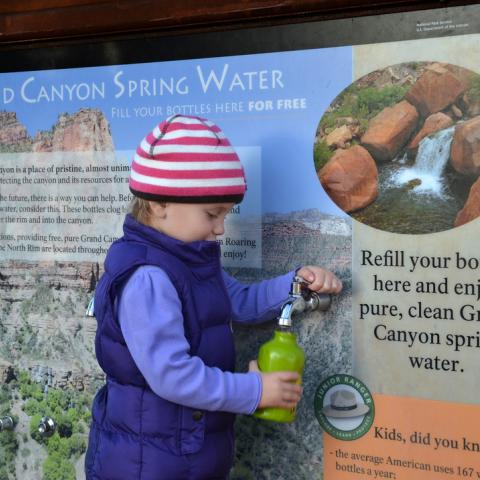
Hotels on the South Rim of Grand Canyon National Park, including El Tovar, will close Thursday due to a water shortage on the rim/NPS file
A water shortage on the South Rim of Grand Canyon National Park will force closure of hotels there, the National Park Service announced Wednesday afternoon.
Four breaks in the Transcanyon Waterline that brings water from the North Rim to the South Rim is forcing the park to implement Stage 4 water restrictions beginning Thursday afternoon. The breaks in the 12-and-a-half-mile-long pipeline have made it impossible to pump water to either the South or the North rims, a park release said.
As a result, the Park Service is implementing the following measures for the foreseeable future:
- Overnight Guest Lodging: Effective Thursday, August 29, all park concessions will halt overnight accommodations. This includes hotel facilities operated by Xanterra, such as El Tovar, Bright Angel Lodge, Maswik Lodge, and Phantom Ranch, as well as Delaware North’s Yavapai Lodge and Trailer Village. Overnight hotel accommodations located outside the park in the town of Tusayan will not be impacted by changes in park operations.
- Dry Camping: Only dry camping will be permitted. Spigot access at campgrounds on the South Rim will be turned off, though faucets in bathrooms will remain operational. Water spigot access will be available at the Mather Campground check-in kiosk.
- No fires will be allowed on the South Rim and inner canyon areas. Fire restrictions prohibit all wood burning and charcoal fires, including campfires, warming fires, and charcoal barbeques. For more information on fire restrictions, visit the park’s Fire Information webpage.
- Operational Services: The park will remain open for day use. All South Rim food and beverage services, the Grand Canyon Clinic, and the Post Office will remain open. The North Rim's Grand Canyon Lodge, and other North Rim visitor services such as the Campground, will remain open.
Park officials say water conservation measures remain in place for both rims of the park. "We are asking residents and visitors to help conserve water by limiting showers to five minutes or less, turning off faucets while shaving or brushing teeth, flushing toilets selectively, washing laundry with full loads, and reporting leaks to the appropriate offices," the park release said.
Backcountry hikers will need to carry all the water they'll need or have ways to treat water along the way.
Read about the need to rebuild the pipeline and the approach the Park Service is taking.
Originally built in the 1960s, the Transcanyon Waterline provides potable water for facilities on the South Rim and inner canyon. The waterline has exceeded its expected lifespan and experiences frequent failures, which require expensive and continuous maintenance work to repair leaks. Since 2010, there have been over 85 major breaks that have each disrupted water delivery. The National Park Service recently started construction on a multi-year, $208 million rehabilitation of the Transcanyon Waterline and upgrades to the associated water delivery system. This crucial investment in infrastructure will ensure the park is able to meet water supply needs for six million annual visitors and approximately 2,500 year-round residents.
The project is expected to be completed in 2027. The Great American Outdoors Act (GAOA) is providing more than $40 million to replace the South Rim Wastewater Treatment Plant which services visitor, staff, lodging and support facilities. GAOA is part of a concerted effort by the National Park Service to address extensive deferred maintenance and repair needs in national parks.




 Support Essential Coverage of Essential Places
Support Essential Coverage of Essential Places







Comments
Seek funding for its replacement in 1968? AJ, the pipeline was built in the mid-60s and had a projected life of 40-some years.
As far as setting aside funding, the Federal Lands Recreation Enhancement Act, which enables parks to set aside a portion of entrance fees to pay for on-site improvements, didn't come about until 2004. Before that, and even now, it's up to Congress to supply funds for these major infrastructure improvements.